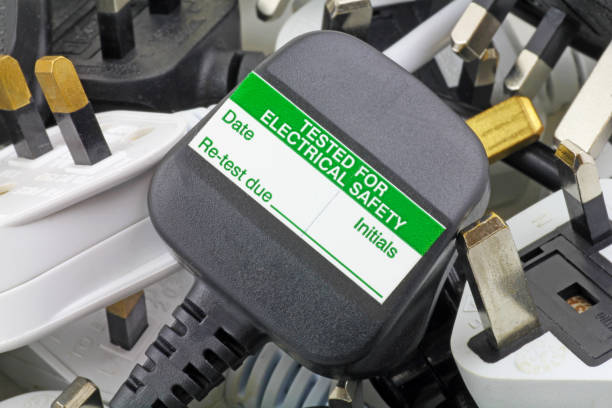
Portable Appliance Testing (PAT): Ensuring Electrical Safety and Compliance
PAT (Portable Appliance Testing) is a robust and crucial safety procedure that involves a rigorous series of visual inspections and sophisticated electrical tests on your business’s portable appliances. This essential process is designed to prevent electrical accidents, protect personnel, and ensure full legal compliance across all operational environments. At Notts Fire & Electrical Ltd, we conduct comprehensive PAT testing across a vast spectrum of equipment, covering common voltages such as the industrial 110v and standard 230v appliances, right up to high-power commercial and industrial 415v equipment. Our thorough approach guarantees every item is safe and suitable for continuous use, thereby maintaining a safe working environment for everyone.
The PAT Testing Process Explained
Our PAT (portable appliance testing) methodology is two-fold, ensuring no potential hazard is overlooked. The first stage is a thorough visual inspection by a qualified engineer. This involves checking for external damage, such as frayed cables, cracked casings, and correctly wired plugs, as the majority of faults are often identifiable without a machine.
The second stage is a series of precise electrical tests using calibrated PAT testing equipment. These tests vary depending on the appliance class but typically include:
- Earth Continuity: To ensure the protective earth conductor is fully functional on Class I appliances.
- Insulation Resistance: To check the integrity of the insulation barrier between the live components and the appliance casing.
- Polarity: To confirm the wiring in the plug is correctly connected.
If an appliance does not pass this stringent safety check, we take immediate and responsible action. We will attempt to rectify minor issues on-site—such as replacing a faulty plug or fuse—to minimise downtime. If the fault cannot be safely fixed, the appliance is clearly labelled with a “failed” sticker, immediately taking it out of service until it can be repaired or replaced. This critical step prevents dangerous equipment from re-entering the workplace, upholding your legal Duty of Care to your employees.
Understanding Your Legal and Safety Obligations
Electrical safety is paramount in any commercial or public environment. PAT (portable appliance testing) testing is not a discretionary procedure; it is mandated by fundamental UK health and safety legislation.
The Electricity at Work Regulations 1989: This law explicitly requires that any electrical equipment that has the potential to cause injury must be properly maintained. For most portable appliances, regular inspection and formal electrical testing is the established primary method of demonstrating compliance. Furthermore, the broader Health and Safety at Work Act 1974 places a significant, overarching responsibility on all employers and duty holders to safeguard the health and safety of their employees and the public. Maintaining safe portable electrical equipment is a vital, auditable part of this obligation. Failure to provide adequate testing can void insurance policies and result in significant penalties or legal action following an incident.
Why Investing in Regular PAT Testing Is Crucial
Beyond fulfilling a legal mandate, the importance of PAT testing translates directly into business security and operational continuity:
- Identifying Hidden Faults: The electrical tests detect internal faults—like degraded insulation or weak earth connections—that a visual inspection alone would miss, thereby preventing major hazards.
- Preventing Incidents: By addressing electrical faults early, testing significantly reduces the risk of electrical fires, electric shocks, and serious workplace injuries.
- Extending Equipment Life: Regular checks can identify and correct minor wear-and-tear issues, extending the operational life of valuable assets and reducing replacement costs.
- Due Diligence: A comprehensive PAT logbook provides undeniable evidence of your commitment to safety, which is essential for insurance purposes and external safety audits.
PAT Testing Frequency Guidelines: A Risk-Based Approach
There is no single “test every year” rule for portable appliances. The recommended frequency depends entirely on a risk assessment of the environment, the class of equipment, and how frequently it is handled. At Notts Fire & Electrical Ltd, we work with you to create a risk-based schedule tailored to your specific needs:
| Construction Sites | 110v Tools, Leads | Very High (Heavy use, harsh conditions) | Quarterly (3 Months) |
| Industrial / Factories | 230v Machinery, Heaters | High (Heavy use, higher voltage) | Annually (12 Months) |
| Schools / Public Areas | Class I & II Appliances | Medium (Regular user turnover) | 6 to 12 Months |
| Offices / Shops | Computers, Monitors, Kettles | Low (Static, light use) | 12 Months |
